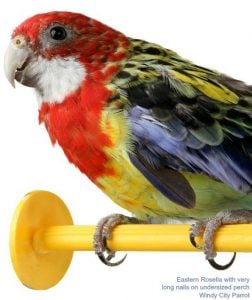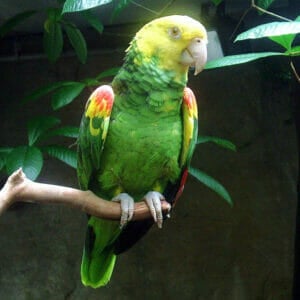
Are You a Perpetual Poop Inspector?
Last Updated on by Mitch Rezman
What you can learn from your bird’s droppings
You should become very aware of your companion bird’s poop because you can use them as a daily guide to your bird’s health. The parrots and soft billed birds we share our homes with are flock creatures and, like all flock mentality creatures, hide signs of illness until they are too ill to be able to hide it any longer. The first clue we have of illness or diet-related problem shows up in our bird’s poop.
Unlike humans, birds have only one opening in the body for allowing fecal matter, urine, and reproductive material (sperm and eggs) to exit, the cholaca. Inside the avian body, three distinct routes bring these types of matter to the cholaca for expulsion from the body. In this case, we will only be looking at droppings rather than the use of the cholaca for reproductive purposes.
Bird poop is made up of three parts. The fecal matter is coiled and varies in color from dark green to brown to a light brown in birds on pellet-based diets. Colorful fruits and vegetables can change the fecal color for a few poops following eating that food. Sweet potatoes could cause poop to have an orangey tint for a short period.
By the same token, watery juicy foods like grapes or a strawberry can cause looser fecal excrement for a short time after consumption. The urates are produced by the kidneys and make up the whitish portion of poop. When dried, urates are chalky in consistency. Urine is a clear substance created by the kidneys and is on the outside the ring of the poop.
If you know your parrot well – and you should – then you probably already know that the first poop of the morning is the largest and somewhat runniest of the day in healthy birds. This is because parrots do not choose to poop where they sleep and a large amount of waste has built up overnight. This poop should not be treated as a baseline poop but you do want to learn what your healthy parrot’s normal during the day poop looks like.
To get a good baseline of daily poops, place clean paper in the cage bottom and feed your bird it’s normal diet. At the end of the day, remove the paper and look at the quality and number of poops. Do this for several days in a row because you serve different vegetables and fruit as well as the fact that a bird may drink more water one day than the next.
Once you have a good baseline, you should examine your bird’s poop on a daily basis for changes in color not accountable to a diet change, texture changes, consistency changes or changes in the number of droppings. These changes indicate changes in health that are visible well before physical signs of illness.
If the amount of fecal matter is suddenly reduced while urine and urates remain at or near the same is a sign the bird may not be eating. Monitor how much the parrot is really eating. Sitting at the food dish may not indicate actual intake. If a bird is fed seed, the seed could be bad with nothing inside the shell. If pellets are fresh and not eaten, an Avian vet checkup is called for.
If the bird is eating but feces are less than normal, the bird may be unable to digest the food and signs of regurgitation should be looked for, again indicating a vet emergency because the bird had some type of blockage, a sure life or death matter for a vet. No fecal matter at all is an even more urgent since a digestive blockage may be the problem; no action would end in certain painful death very soon.
Feces that appear to contain mucous-like liquid indicate intestinal tract infections. Popcorn-like fecal matter indicates a pancreatic problem. Undigested food in feces is also a matter for quick vet action. Black feces indicate blood in the stool and can guide your vet to early diagnosis of what could become a death-threatening issue before the physical clues appear.
The urate or urine crystals should always be off white in color. If the urates are yellow or bright green then liver problems such as hepatitis may be indicated. Neon green urates can mean the bird has psittacosis while blood in either the urine or urates can indicate kidney problems or toxicity such as heavy metal poisoning from lead or another toxic material.
Every companion parrot or caged bird should have regular vet health checks. This way your avian vet has a baseline to work from if your bird develops a problem revealed by abnormal poop. This way the avian health provider can quickly identify and treat the problem, while waiting for physical manifestations can be too late many times to save the bird.
Because birds hide illness until too weak to be unable to continue hiding them any longer these signs of trouble can appear well in advance of fluffed feathers, low perching and general signs of lethargy and misery.
So, learn to be a poop investigator for the health of your bird. You’ll be doing your bird a big favor.
Author Profile

Latest entries
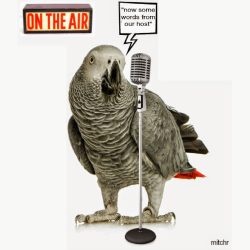 Bird & Parrot CareJune 20, 2025Understanding the Best Way to Use Prevue Pets Mimic Me Voice Trainer
Bird & Parrot CareJune 20, 2025Understanding the Best Way to Use Prevue Pets Mimic Me Voice Trainer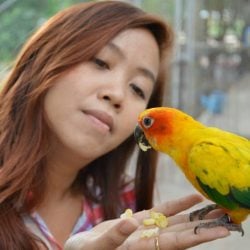 Bird BehaviorJune 6, 2025How Do I Keep My Parrot From Dumping His Food Every Day?
Bird BehaviorJune 6, 2025How Do I Keep My Parrot From Dumping His Food Every Day? Birds & LightingMay 16, 2025I Am Seeking Clarity About Lighting for My Birds Cage
Birds & LightingMay 16, 2025I Am Seeking Clarity About Lighting for My Birds Cage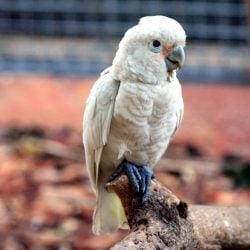 Bird RescueApril 29, 2025How Do We Re-Home a 17 yr Goffin Cockatoo?
Bird RescueApril 29, 2025How Do We Re-Home a 17 yr Goffin Cockatoo?

